1. Biography
Vita Sackville-West's life was shaped by her aristocratic lineage, her ancestral home, and early experiences that fostered a sense of isolation but also ignited her literary and personal explorations.
1.1. Antecedents and Family Background
Victoria Mary Sackville-West, known as Vita to distinguish her from her mother, was born on 9 March 1892 at Knole, the ancestral home of her aristocratic family in Kent. She was the only child of cousins Victoria Sackville-West and Lionel Sackville-West, 3rd Baron Sackville. Vita was tall and slender, with an androgynous appearance. Vita's mother was the illegitimate daughter of Lionel Sackville-West, 2nd Baron Sackville and the Spanish dancer Pepita (Josefa de Oliva, née Durán y Ortega), and had been raised in a Parisian convent.
Although her parents' marriage began happily, they drifted apart shortly after Vita's birth, with her father taking an opera singer as his mistress, who subsequently lived with them at Knole. Knole itself had been granted to Thomas Sackville, 1st Earl of Dorset by Elizabeth I in the sixteenth century. The Sackville-West family adhered to the English aristocracy's inheritance customs, which followed agnatic male primogeniture. This prevented Vita from inheriting Knole upon her father's death, as the house followed the title and was bequeathed instead to his brother, Charles Sackville-West, 4th Baron Sackville. This exclusion from inheriting her beloved ancestral home was a source of lifelong bitterness for Vita.
1.2. Early Life and Education
Sackville-West received her initial education at home from governesses before attending Helen Wolff's school for girls, an exclusive day school in Mayfair. It was there that she met her first loves, Violet Keppel and Rosamund Grosvenor. She struggled to befriend local children and found it difficult to make friends at school, leading her biographers to describe her childhood as marked by loneliness and isolation. Despite this, she was a prolific writer at Knole, penning eight full-length (though unpublished) novels between 1906 and 1910, along with ballads and many plays, some of which were in French. Her lack of formal education contributed to a later shyness among her peers, particularly those in the Bloomsbury Group, and she often felt intellectually inferior, never quite at the intellectual heart of her social circle.
Sackville-West's perceived Roma lineage, which she invented for herself on the Spanish side of her family, fueled a passion for "gypsy" ways. She viewed this culture as hot-blooded, heart-led, dark, and romantic, and it significantly influenced the stormy nature of many of her later love affairs and became a strong theme in her writing. She visited Romani camps and felt a deep connection with them, explaining her own bohemian behavior as a result of this alleged "Gypsy" descent.
During her childhood, Vita spent considerable time in the Paris apartments of Sir John Murray Scott, secretary to the couple who inherited and developed the Wallace Collection. Scott was a devoted companion to her mother, Lady Sackville, and they were rarely apart. This time in Paris allowed Vita to perfect her already fluent French. Her mother, Lady Sackville, was known for having a wide array of famous lovers, including financier J. P. Morgan and Sir John Murray Scott himself, with whom she had a relationship from 1897 until his death in 1912.
1.3. Early Relationships and Romantic Life
Sackville-West debuted in society in 1910. She was pursued by several notable figures, including Orazio Pucci, son of a distinguished Florentine family; Lord Granby (later 9th Duke of Rutland); and Lord Lascelles (later 6th Earl of Harewood). In 1924, she had a passionate affair with historian Geoffrey Scott, which, like many of her later affairs, led to the collapse of his marriage. Most of her romantic entanglements, both before and after this period, were with women.
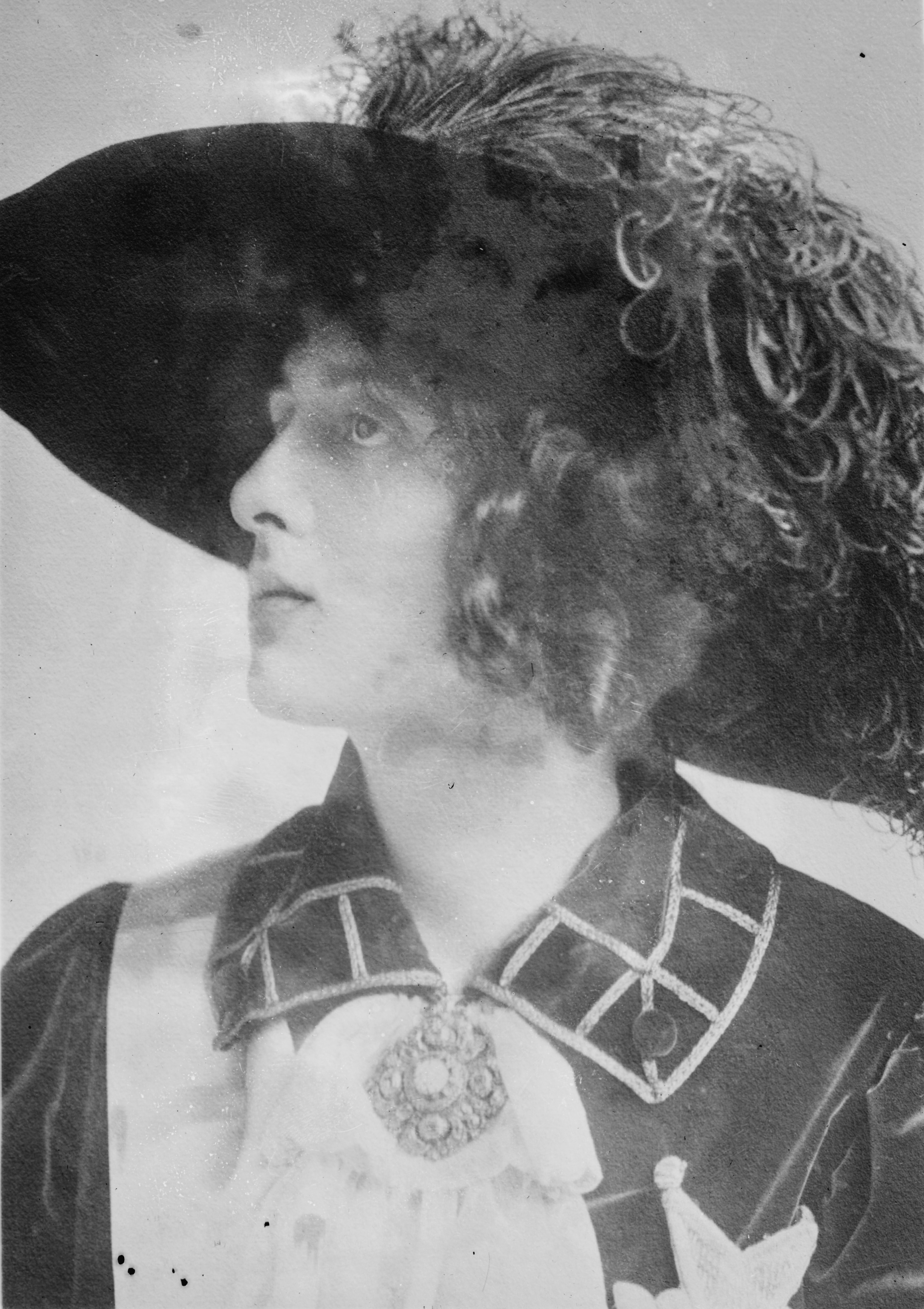
Sackville-West fell in love with Rosamund Grosvenor (1888-1944), who was four years her senior and the granddaughter of Robert Grosvenor, 1st Baron Ebury. In her journal, Vita acknowledged the impropriety of sleeping with Rosamund but saw no real conflict, only concern about being discovered. Vita's mother, Lady Sackville, invited Rosamund to visit their family villa in Monte Carlo in 1910. Rosamund also stayed with Vita at Knole House, at Murray Scott's pied-à-terre on the Rue Laffitte in Paris, and at Sluie, Scott's shooting lodge in the Scottish Highlands. This secret relationship concluded in 1913 when Vita married.
A more profound involvement for Sackville-West was with Violet Keppel, the daughter of the Hon. George Keppel and Alice Keppel. Their sexual relationship began in their teens and had a lasting influence on both women for years. Both later married and became writers.
2. Marriage and Personal Life
Vita Sackville-West's marriage to Harold Nicolson was characterized by an unconventional open arrangement, allowing both partners to pursue same-sex relationships. Her personal life was further defined by significant romantic and intellectual connections with women, which profoundly impacted her identity and creative output.
2.1. Marriage to Harold Nicolson
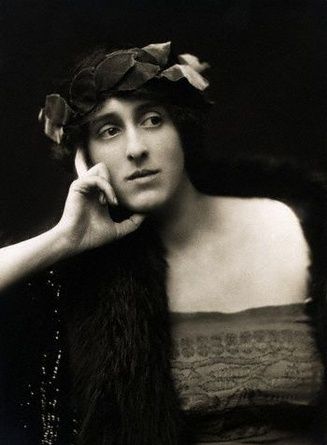
After an 18-month courtship, Vita Sackville-West married the young diplomat Harold Nicolson in 1913, at the age of 21, in the private chapel at Knole. Nicolson, nicknamed 'Hadji' or 'Pilgrim' by his father, was the third son of British diplomat Arthur Nicolson, 1st Baron Carnock. Vita found Nicolson to be a secretive character, and their courtship was entirely chaste, without even a kiss. Her parents initially opposed the marriage due to Nicolson's modest annual income of 250 GBP, especially when compared to other suitors like Lord Granby, who had an annual income of 100.00 K GBP and was heir to the Duke of Rutland title. At the time of their marriage, Nicolson was the third secretary at the British Embassy in Constantinople (now Istanbul).
The couple maintained an open marriage, with both Sackville-West and Nicolson engaging in same-sex relationships before and during their union, a practice also common among some members of the Bloomsbury Group, with whom they had connections. Sackville-West perceived herself as psychologically divided: one aspect of her personality was more feminine, soft, and attracted to men, while the other was more masculine, aggressive, and attracted to women.
Following the career path of his father, Harold Nicolson served as a diplomat, journalist, broadcaster, Member of Parliament, and author of biographies and novels. After their wedding, the couple resided in Cihangir, a suburb of Constantinople, then the capital of the Ottoman Empire. While Sackville-West loved Constantinople, she found the duties of a diplomat's wife unappealing, sarcastically describing her attempts to gracefully embody the role of a "correct and adoring wife of the brilliant young diplomat." In the summer of 1914, upon becoming pregnant, they returned to England to ensure she could give birth in a British hospital. The British declaration of war on the Ottoman Empire in November 1914 prevented their return to Constantinople.
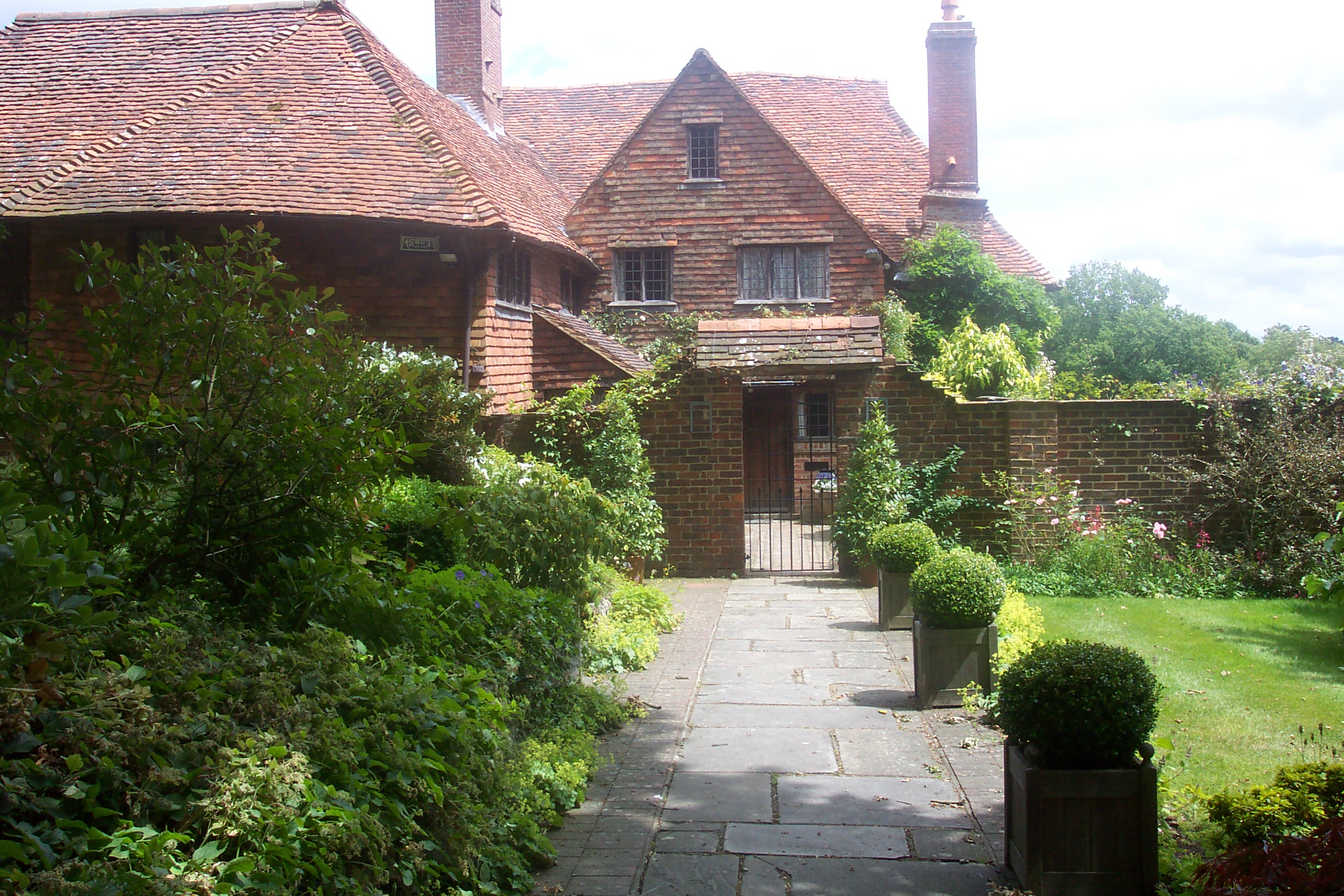
The family settled at 182 Ebury Street, Belgravia, and purchased Long Barn in Kent as a country house, where they lived from 1915 to 1930. They commissioned architect Edwin Lutyens to make improvements to Long Barn.
2.2. Children
Vita Sackville-West and Harold Nicolson had two sons: Benedict Nicolson (1914-1978), who became an art historian, and Nigel Nicolson (1917-2004), a renowned editor, politician, and writer. Another son was stillborn in 1915.
2.3. Relationships with Women
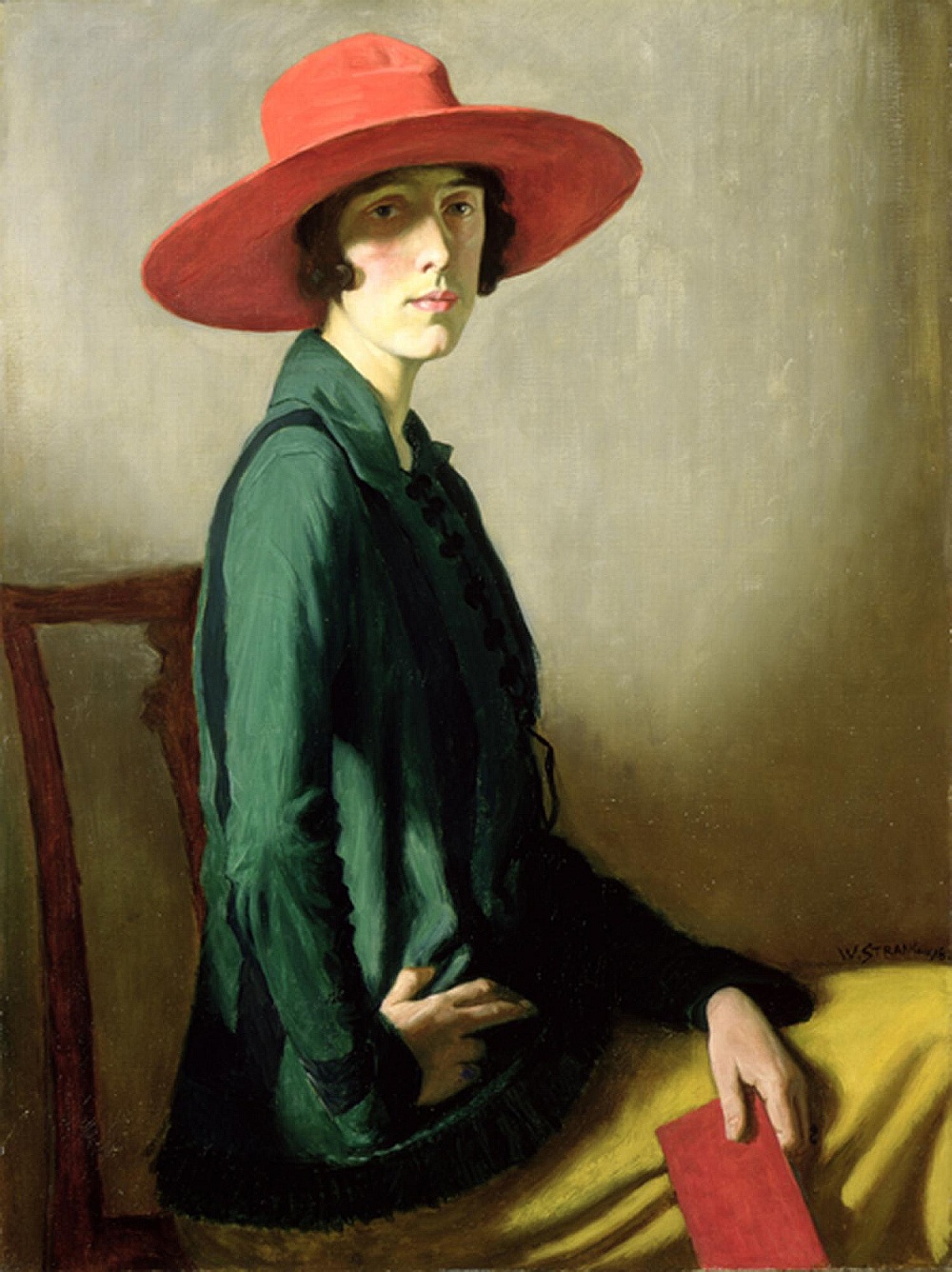
Sackville-West continued to receive fervent letters from her lover Violet Keppel. She was deeply distressed by news of Keppel's engagement to Major Denys Trefusis. In response, Sackville-West traveled to Paris to persuade Keppel to honor their commitment. Despite her depression and suicidal thoughts, Keppel eventually married her fiancé under pressure from her mother, though she made it clear she did not love her husband. Sackville-West considered this marriage her greatest failure.
From 1918 onwards, Sackville-West and Keppel disappeared together multiple times, primarily to France. In 1918, Vita described a radical 'liberation' where her male aspect was unexpectedly freed, leading to a "wild irresponsible day" filled with running, shouting, jumping, climbing, and vaulting over gates, feeling like a schoolboy on holiday. The mothers of both women collaborated to sabotage the relationship and force their daughters back to their husbands, but their efforts were unsuccessful. Sackville-West frequently dressed as a man, adopting the role of Keppel's husband. The two women pledged fidelity to each other, vowing not to engage in sexual relations with their husbands. In a letter to Nicolson dated 1 June 1919, Sackville-West explained her refusal to leave Keppel, stating she should never have married and that women should have the same freedom as men in their youth, criticizing the "rotten and ridiculous system" of her time.
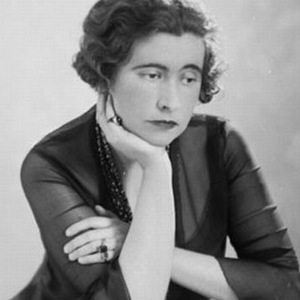
Keppel continued to pursue Sackville-West intensely until Sackville-West's affairs with other women eventually strained their relationship. In November 1919, while in Monte Carlo, Sackville-West felt deeply despondent and contemplated suicide, believing Nicolson would be better off without her. In 1920, the lovers eloped to France again, prompting their husbands to pursue them in a small two-seater aeroplane. Sackville-West broke off the relationship after hearing allegations that Keppel had been sexually involved with her husband, thus breaking their lesbian oath of fidelity. Despite this rift, the two women remained devoted to each other.
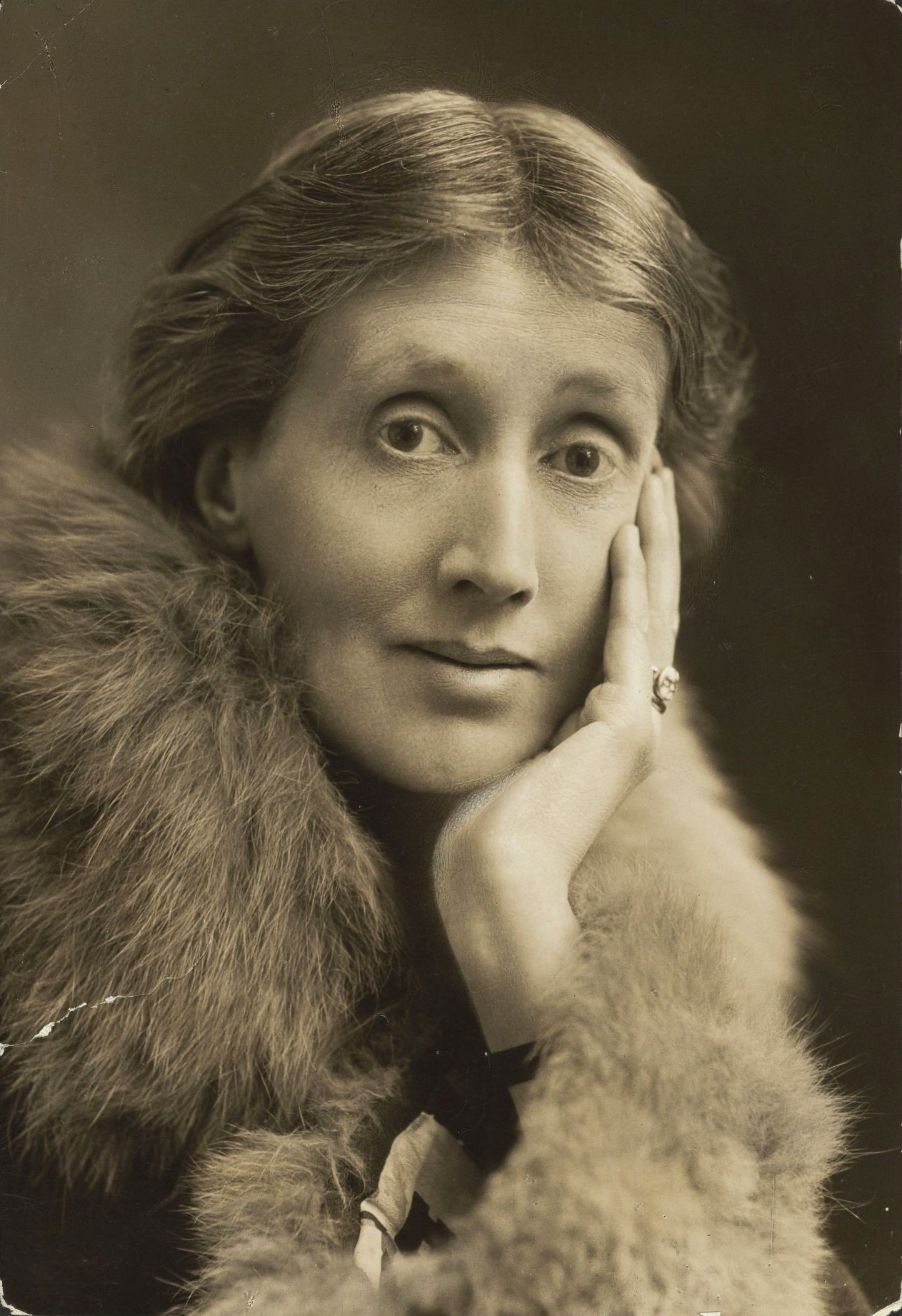
Sackville-West's relationship with the prominent writer Virginia Woolf began in 1925 and lasted until 1935, reaching its peak between 1925 and 1928. American scholar Louise DeSalvo noted that these ten years marked the artistic peak for both women, attributing it to their positive mutual influence, as "neither had ever written so much so well, and neither would ever again reach this peak of accomplishment." In a letter to her son, Nigel Nicolson, Vita Sackville-West clarified that the physical aspect of her famous affair with Virginia Woolf consisted of only two occasions where they went to bed together, and even then, they may have only engaged in "bundling," as Vita was aware of Woolf's extreme emotional fragility and sought to avoid causing her a mental breakdown with a tempestuously sexual affair.
Sackville-West first met Virginia Woolf at a dinner party in London in December 1922. Despite coming from a significantly wealthier aristocratic background than Woolf, the two women connected over their confined childhoods and emotionally absent parents. Woolf was aware of Sackville-West's relationship with Keppel and was impressed by her free spirit. Leonard Woolf noted that Sackville-West belonged to a world entirely different from theirs, with her lineage and Knole's grandeur imbuing her with an alien quality that initially made intimacy difficult. Virginia Woolf, in 1925, described Sackville-West as radiant and full of life, capable of commanding any company, representing her country, and managing her household, seeing her as a "real woman" in a way Woolf felt she herself had never been.
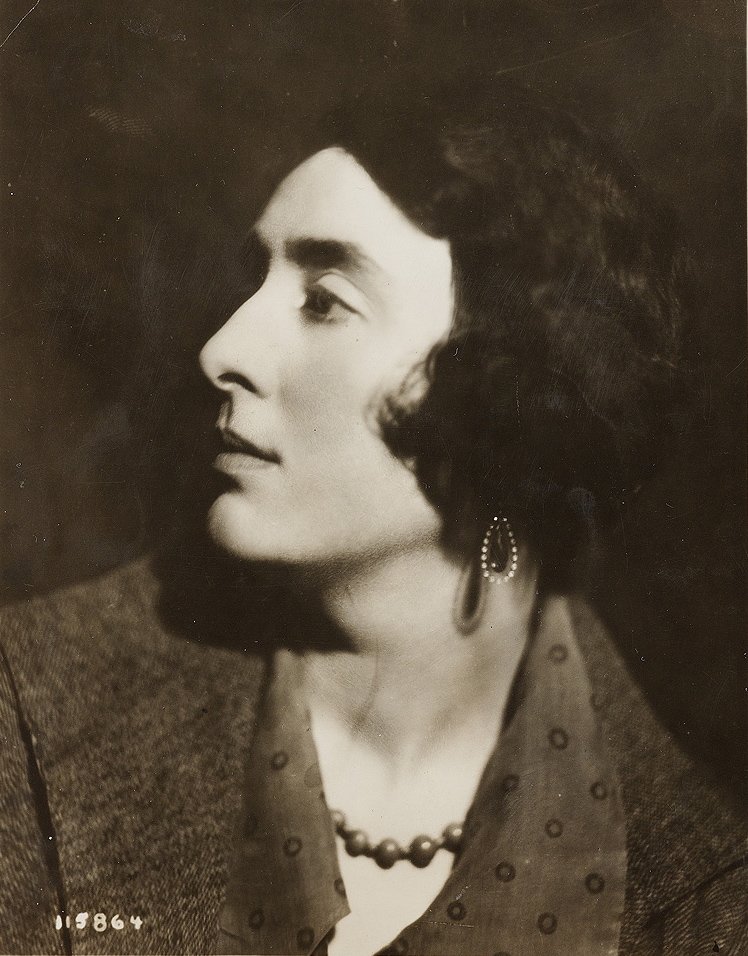
Sackville-West greatly admired Woolf's writing, considering her the superior author, and expressed shame about her own "illiterate writing" compared to Woolf's scholarly style. While Woolf envied Sackville-West's rapid writing, she felt her prose was "too fluent," implying a lack of careful craftsmanship. Before her second trip to Persia in 1927, a chastened Sackville-West wrote to Woolf, promising to work harder on her next book, acknowledging Woolf's profound intellectual influence and expressing her desire to write well, like Queen Victoria, who vowed to "be good."
As their closeness grew, Woolf revealed that she had been abused by her step-brother as a child. Sackville-West's support was instrumental in Woolf's healing from this trauma, enabling her to experience a satisfying erotic relationship for the first time, even telling Sackville-West that she was the first person to cause her to orgasm. During a trip to France with Sackville-West, Woolf purchased a mirror, stating she felt she could look in a mirror for the first time in her life. Sackville-West's encouragement boosted Woolf's confidence and helped her shed her self-image as a sickly semi-recluse. She convinced Woolf that her nervous ailments were misdiagnosed and that she should focus on her diverse intellectual projects, learning to rest. In 1925, Sackville-West urged Woolf to prioritize her own novels over other people's manuscripts, questioning when Woolf would find time for her own six novels given her other commitments.
To support the Woolfs, Sackville-West chose their Hogarth Press as her publisher. While her first novel with Hogarth, Seducers in Ecuador, sold only 1,500 copies in its first year, The Edwardians sold 30,000 copies within six months. This commercial success provided a significant financial boost to Hogarth, allowing Woolf to write more experimental novels like The Waves, despite Woolf not always valuing the romantic themes of Sackville-West's books. Although contemporary critics now view Woolf as the superior writer, in the 1920s, Sackville-West was considered more accomplished, with her books outselling Woolf's by a large margin. The extent of Hogarth's reliance on Sackville-West was evident in a 1930 letter from Woolf, where she referred to Sackville-West as the "Woolf bread-winner," doubting her own next novel would earn them even a "penny bun."
Sackville-West's love for travel, including frequent trips to France, Spain, and visits to Nicolson in Persia, was emotionally taxing for Woolf, who intensely missed her. Woolf's novel To the Lighthouse, with its theme of longing for an absent person, was partly inspired by Sackville-West's frequent absences. Most notably, Sackville-West inspired Woolf to write Orlando, a novel featuring a protagonist who changes sex over centuries. Sackville-West's son, Nigel Nicolson, famously described Orlando as "the longest and most charming love-letter in literature."
However, tensions arose in their relationship. Woolf was often troubled by what she perceived as Sackville-West's promiscuity, accusing her of engaging with anyone who caught her fancy due to her strong need for sex. In A Room of One's Own (1929), Woolf implicitly criticized Sackville-West by attacking patriarchal inheritance laws, noting Sackville-West's inability to question the aristocratic system she belonged to and was, to some extent, a victim of. In the 1930s, they clashed over Nicolson's "unfortunate" involvement with Oswald Mosley and the New Party (later renamed the British Union of Fascists), with Woolf expressing her anger in a letter to Sackville-West in August 1931. They also disagreed on the imminent war, with Sackville-West supporting rearmament while Woolf remained a pacifist, contributing to the distancing of their relationship in 1935. Virginia Woolf recorded in her diary on 11 March 1935, "My friendship to Vita is over. Not with a quarrel, not with a bang, but as ripe fruit falls. But her voice saying 'Virginia?' outside the tower room was as enchanting as ever. Only then nothing happened." Despite this, the two women reconnected in 1937 and remained close until Woolf's death in 1941. In a letter dated 24 April 1940, Vita Sackville-West wrote to Virginia Woolf, "Your friendship means so much to me. In fact it is one of the major things in my life."
2.4. Other Romantic Interests
Beyond her most prominent relationships, Vita Sackville-West had other notable romantic connections. One of her male suitors, Henry Lascelles, 6th Earl of Harewood, later married the Princess Royal and became the 6th Earl of Harewood.
In 1927, Sackville-West had an affair with Mary Garman, a member of the Bloomsbury Group. Between 1929 and 1931, she was in a relationship with Hilda Matheson, who was the head of the BBC Talks Department. In 1931, Sackville-West was involved in a ménage à trois with Scottish journalist and early female war correspondent Evelyn Irons and Irons's lover, Olive Rinder. Irons had initially interviewed Sackville-West after her novel The Edwardians became a best-seller.
3. Literary and Artistic Career
Vita Sackville-West's literary career spanned poetry, novels, non-fiction, and journalism, often reflecting her personal experiences, passions, and the social conventions of her time.
3.1. Poetry and Epic Poems
Sackville-West's poetry, though less known today than her other works, encompasses a dozen collections and epic poems. She often explored themes of natural life and romantic love in her verse. Her epic poems, The Land (1926) and The Garden (1946), demonstrate her enduring passion for the earth and family tradition. The Land may have been written as a response to the Modernist poetry masterpiece The Waste Land, also published by Hogarth Press. She dedicated her poem to her lover Dorothy Wellesley. A recording of Sackville-West reading The Land was released by the British Columbia label. This poem earned her the Hawthornden Prize in 1927. She won the prize again in 1933 for her Collected Poems, making her the only writer to receive this award twice. The Garden was awarded the Heinemann Award for literature.
Her epic poem Solitude, published by the Hogarth Press in October 1938, contains references to the Bible, Paracelsus, Ixion, Catullus, Andromeda, the Iliad, and a Sabine bride. While acceptable in the early 20th century, these references were considered anachronistic by 1938. The narrator of Solitude expresses an ardent love for the English countryside. The narrator's sex is ambiguous, implied at various points to be a man or a woman, but it is clear that the narrator intensely loved and deeply missed a woman who is no longer present. At one point, the narrator's horror and disgust at Ixion, a brutal rapist, suggests she is a woman. At another, her desire to free Andromeda from her chains and make love implies she is a lesbian. The narrator compares the love of nature to the love of books, both cultivating her mind. She sees herself as superior to farmers who merely work the land without the time or interest for poetry, which allows her a deeper appreciation of nature.
3.2. Novels
Sackville-West's novels often achieved immediate success. The Edwardians (1930) and All Passion Spent (1931) are perhaps her best-known novels today. Seducers in Ecuador (1924) also sold particularly well, ironically surpassing her mentor Virginia Woolf's novel Mrs Dalloway at the top of the sales charts.
In All Passion Spent, the elderly Lady Slane courageously embraces a long-suppressed sense of freedom and whimsy after a lifetime of conforming to convention. This novel appears to reflect Woolf's influence; Lady Slane truly begins to live only after the death of her husband, a former prime minister. She befriends the servants of her estate, discovering the lives of people she had previously ignored. By the end of the novel, Lady Slane persuades her granddaughter to break off an arranged marriage to pursue her career as a musician. The BBC dramatized All Passion Spent in 1986, starring Dame Wendy Hiller.
Her novel Challenge (1923) is a roman à clef that draws heavily from her affair with Violet Keppel. Sackville-West and Keppel initially began writing this book as a collaborative effort. It was published in America but remained banned in the UK until 1974. The male character's name, Julian, was Sackville-West's nickname when she dressed as a man. In Challenge, Julian is a male version of Sackville-West, and Eve, the woman he passionately desires, represents Keppel. Notably, Sackville-West uses Challenge to defend Keppel against insults Nicolson had used in his letters, such as calling Keppel a "swine" or "pig." Julian explicitly states that Eve is neither a swine nor a pig, acknowledging her feminine weaknesses and faults but redeeming her through self-sacrifice. Reflecting Sackville-West's fascination with the Romani people, Eve is portrayed as a seductive Romani woman whose "insinuating femininity" Julian cannot resist, drawing him away from his political mission to win independence on a fictional Greek island during the Greek War of Independence. Nicolson had pleaded with his wife not to dedicate the book to Violet, stating it "would kill me if you did." When Challenge was published in 1924, the dedication was written in Romani, reading: "This book is yours, honoured witch. If you read it, you will find your tormented soul changed and free." Throughout their relationship, Keppel often threatened suicide if Sackville-West left her, a trait shared by Eve, who ultimately drowns herself by walking into the sea when Julian is too far away on a boat to hear her calls. The book's ending reflected Sackville-West's guilt over breaking her relationship with Keppel.
Her mother, Lady Sackville, found the portrayal in Challenge obvious enough to forbid its publication in England. However, Vita's son, Nigel Nicolson, praised his mother, stating she "fought for the right to love, men and women, rejecting the conventions that marriage demands exclusive love, and that women should love only men, and men only women. For this she was prepared to give up everything... How could she regret that the knowledge of it should now reach the ears of a new generation, one so infinitely more compassionate than her own?"
Sackville-West was deeply fascinated by and frequently wrote about the Romani people. British scholar Kirstie Blair noted that for Sackville-West, "Gypsies represent liberation, excitement, danger and the free expression of sexuality." Romani women, particularly Spanish Romani women, served as a symbol for female homosexuality in her writings. Like many other female writers of her era, Sackville-West viewed the Romani as both familiar and strange: perceived and admired as flamboyant romantics, yet also seen and disliked as shifty, dishonest types. As a rootless people found everywhere in Europe, they served as a symbol for an unconventional femininity. Sackville-West's portrayal of the Romani was influenced by orientalism, as they were believed to originate from India. The idea of a people belonging nowhere, existing outside the values of "civilization," genuinely appealed to her, offering the possibility of gender roles different from those in the West. Although English, Sackville-West fabricated Romani ancestry for herself on her Spanish mother's side, using it to explain her bohemian behavior.
Woolf's novel Orlando (1928) was inspired by Sackville-West, featuring a protagonist who changes sex over centuries. Woolf documented the conception of Orlando in her diary on 5 October 1927, envisioning a biography spanning from 1500 to the present, titled Orlando, with Vita as the subject, but with a sex change. Woolf felt she needed Sackville-West's permission to write Orlando, asking in a letter, "But listen, suppose Orlando turns out to be Vita and its all about you and the lusts of your flesh and the lure of your mind... Do you mind, say Yes or No?" Reflecting Sackville-West's interest in the Romani, when Orlando goes to bed as a man and mysteriously wakes up as a woman in Constantinople (possibly due to a spell cast by a Romani witch he married), it is at a Romani camp in the Balkans that Orlando is first welcomed and accepted as a woman, as the Romani in the novel make no distinctions between the sexes. Ultimately, Woolf satirizes Sackville-West's Romani fetish, as Orlando, an English aristocrat, prefers not to live in poverty as part of a wandering Romani caravan in the Balkans. The call of a settled aristocratic life in an English country house proves too strong for her, mirroring Sackville-West's own preference for a settled life in the English countryside despite her fantasies of a nomadic Romani existence. Orlando, intended as a fantasy where Orlando (a stand-in for Sackville-West) inherits an estate similar to Knole (which Sackville-West would have inherited as the eldest child if she had been a man), ironically marked the beginning of tension between the two women. Sackville-West often complained in her letters that Woolf was more interested in writing a fantasy about her than in reciprocating her affection in the real world. After finishing Orlando, Woolf wrote to Sackville-West, "For Promiscuous you are and that is all to be said about it. Look in the Index of Orlando-after Pippin and see what comes next-Promiscuity passim." In another letter, Woolf warned Sackville-West, "Yes, you are an agile animal-no doubt about it-but as to your gambols being diverting... I'm not so sure... I'm a fair-minded woman. You only be careful with your gamboling or you'll find Virginia's soft crevices lined with hooks."
Sackville-West's 1932 novel Family History tells the story of Evelyn Jarrold, a wealthy widow who married into a family whose recent wealth and social position derive from coal mine ownership. The novel details her ill-fated love affair with Miles Vane-Merrick, a much younger man with progressive social ideas. Evelyn's husband, Tommy, died in the Great War, leaving her with little to occupy her apart from her son Dan (the Jarrolds' heir, away at Eton), social events, and visits to her dressmaker. Vane-Merrick is a farming landowner and Member of Parliament, writing a book on economics. He represents new, progressive values and the male world of work and economic activity, while Evelyn Jarrold represents traditional values and the female world of family ties and social engagements. The characters of Viola and Leonard Anquetil in Family History are thinly veiled versions of Virginia and Leonard Woolf, portrayed as socialists, pacifists, and feminists. In Orlando, Woolf allowed Vita to finally "own" Knole, and in Family History, Vita reciprocates this gesture by giving the Anquetils children who turn out to be intelligent and decent people. Woolf never had children and feared she would have been a bad mother, so casting her fictional alter-ego as an excellent mother was a "gift" to Woolf.
Other successful novels include Dark Island, Grand Canyon, and La Grande Mademoiselle, though these were less immediate successes. Grand Canyon (1942) is a science fiction "cautionary tale" about a Nazi invasion of an unprepared United States, taking an unexpected twist beyond a typical invasion narrative.
A recently rediscovered work from 1922, "A Note of Explanation," was written specifically for the miniature collection of books within Queen Mary's Dolls' House. It tells the story of a sprite inhabiting the doll's house and retells several fairy tales from the sprite's perspective, indicating their influence on the story. This book was adapted for the stage by Emily Ingram as "A Sprite in the Doll's House" in 2019 and performed in Edinburgh at the Palace of Holyrood House as part of their Christmas festivities.
3.3. Non-fiction, Biography, and Travel Writing
Sackville-West was also a notable non-fiction writer, biographer, and travel writer. Her biographical works include a biography of Saint Joan of Arc in the work of the same name, a dual biography of Saint Teresa of Ávila and Thérèse of Lisieux titled The Eagle and the Dove, a biography of the author Aphra Behn, and a biography of her maternal grandmother, the Spanish dancer known as Pepita.
Her travel writing includes A Passenger to Tehran (1926), which recounts her experiences in Tehran during her visits to Nicolson between 1925 and 1927. The couple were involved in planning the coronation of Rezā Khan and became well acquainted with the six-year-old Crown Prince Mohammad Reza Pahlavi. She also visited and wrote about the former capital of Isfahan to see the Safavid palaces. Another travelogue is Twelve Days: an account of a journey across the Bakhtiari Mountains of South-western Persia (1927), later reprinted as Twelve Days in Persia.
Her historical writings include Knole and the Sackvilles (1922), a history of her ancestral home. She also published Country Notes (1939) and Country Notes in Wartime (1940).
3.4. Translations and Personal Writings
Sackville-West also undertook translations of foreign literature, notably Rainer Maria Rilke's Duino Elegies (1931), translated with Edward Sackville-West. This publication by Virginia and Leonard Woolf's Hogarth Press marked the English debut of Rilke's masterpiece, which would later be rendered into English over 20 times, influencing countless poets, musicians, and artists in the English-speaking world.
Her personal writings include Portrait of a Marriage, a memoir written in the early 1920s but not published until 1973. In this work, she sought to explain her decision to remain with Nicolson and her love for Violet Keppel. She used nature metaphors, describing her life as a "bog" and a "swamp," to present her account as truthful and to suggest her personal life was naturally unappealing. Sackville-West aimed to explain her sexuality, which she considered central to her personality, writing that in the future, "it will be recognized that many more people of my type do exist than under the present-day system of hypocrisy is commonly admitted."
Reflecting some ambivalence about her sexuality, Sackville-West presented her desires for Keppel as both "deviant" and "natural," seemingly uncertain if her sexuality was normal. However, American scholar Georgia Johnston argued that this confusion was partly due to her desire for the memoir to be published eventually. While expressing deep desire and love for Keppel, she also declared "shame" about this "duality with which I was too weak and too self-indulgent to struggle." At times, she called herself a "pariah" with a "perverted nature" and "unnatural" feelings for Keppel, who was portrayed as a tempting yet degrading object of her desire. Sackville-West advocated for a "spirit of candor" in society to foster tolerance for gay and bisexual individuals. Influenced by sexologists like Magnus Hirschfeld, Edward Carpenter, Richard von Krafft-Ebing, Havelock Ellis, and Sigmund Freud, she sometimes described her sexuality as abnormal and a psychological flaw, portraying heterosexuality as the norm she failed to meet.
Sackville-West stated that she wrote Portrait of a Marriage for scientific purposes, hoping it would help people understand bisexual individuals, thereby allowing her to implicitly normalize her sexuality despite her self-condemnation. Some sexologists she cited, like Carpenter and Ellis, argued that homosexuality and bisexuality were normal. Her "scientific" approach, supported by quotes from Ellis and Carpenter, allowed her to present her bisexuality as implicitly normal. Writing in the third person, Sackville-West stated, "she regrets that the person Harold married wasn't entirely and wholly what he had thought of her, and that the person who loves and owns Violet isn't a second person, because each suits each other." She portrayed her sexuality as an innate part of her personality, presenting herself as an accursed woman deserving of sympathy rather than condemnation.
When her son Nigel Nicolson published Portrait of a Marriage in 1973, he was concerned about potential obscenity charges and went to great lengths in his introduction to emphasize the legitimacy of same-sex love. Despite portraying herself as "deviant" for her feelings for women, Sackville-West also wrote in the memoir of the joyous "liberation of half my personality" upon discovering and accepting her bisexuality as a teenager, contradicting her earlier self-condemnation. Johnston suggested that Sackville-West's portrayal of her lesbian side, depicting Keppel as evil and Nicolson as good, was the only way she could express this aspect of her personality at the time, even if it meant "annihilating herself." The memoir was dramatized by the BBC (and PBS in North America) in 1990, starring Janet McTeer as Vita and Cathryn Harrison as Violet, winning four BAFTAs.
3.5. Other work and achievements
Despite being a shy woman, Sackville-West often compelled herself to participate in literary readings for book clubs and on the BBC to feel a sense of belonging. Her affinity for classical traditions in literature led to her being unfavored by modernist critics, and by the 1940s, she was often dismissed as a dated writer, much to her dismay. In 1947, Sackville-West was made a Fellow of the Royal Society of Literature and a Member of the Order of the Companions of Honour.
4. Sissinghurst Garden and Horticultural Work
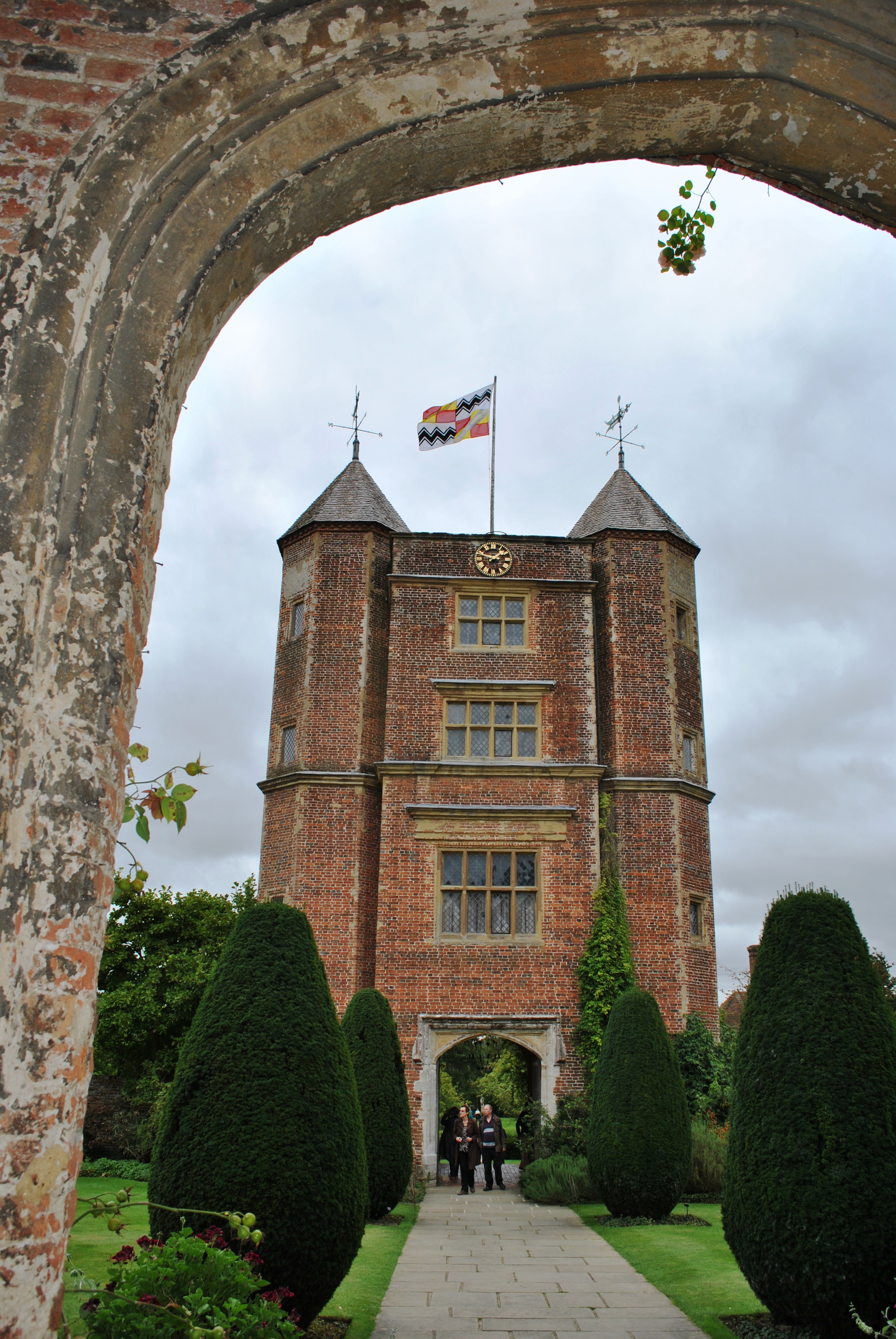
In 1930, the family acquired and moved to Sissinghurst Castle, near Cranbrook, Kent. The castle had previously been owned by Vita's ancestors, which gave it a dynastic appeal, especially as she had been excluded from inheriting Knole and a title. Sissinghurst was an Elizabethan ruin, and the creation of its gardens became a joint labor of love spanning many decades, beginning with years of clearing debris from the land. Harold Nicolson provided the architectural structure with strong classical lines, which framed Vita's innovative informal planting schemes. She pioneered a new and experimental system of garden "enclosures" or "rooms," such as the White Garden, Rose Garden, Orchard, Cottage Garden, and Nuttery. She also innovated single color-themed gardens and design principles that guided visitors through a journey of discovery and exploration. Her first garden at Long Barn (Kent, 1915-1930) served as an experimental space for learning through trial and error, and she applied her hard-won experience and ideas to Sissinghurst. Sissinghurst was first opened to the public in 1938.
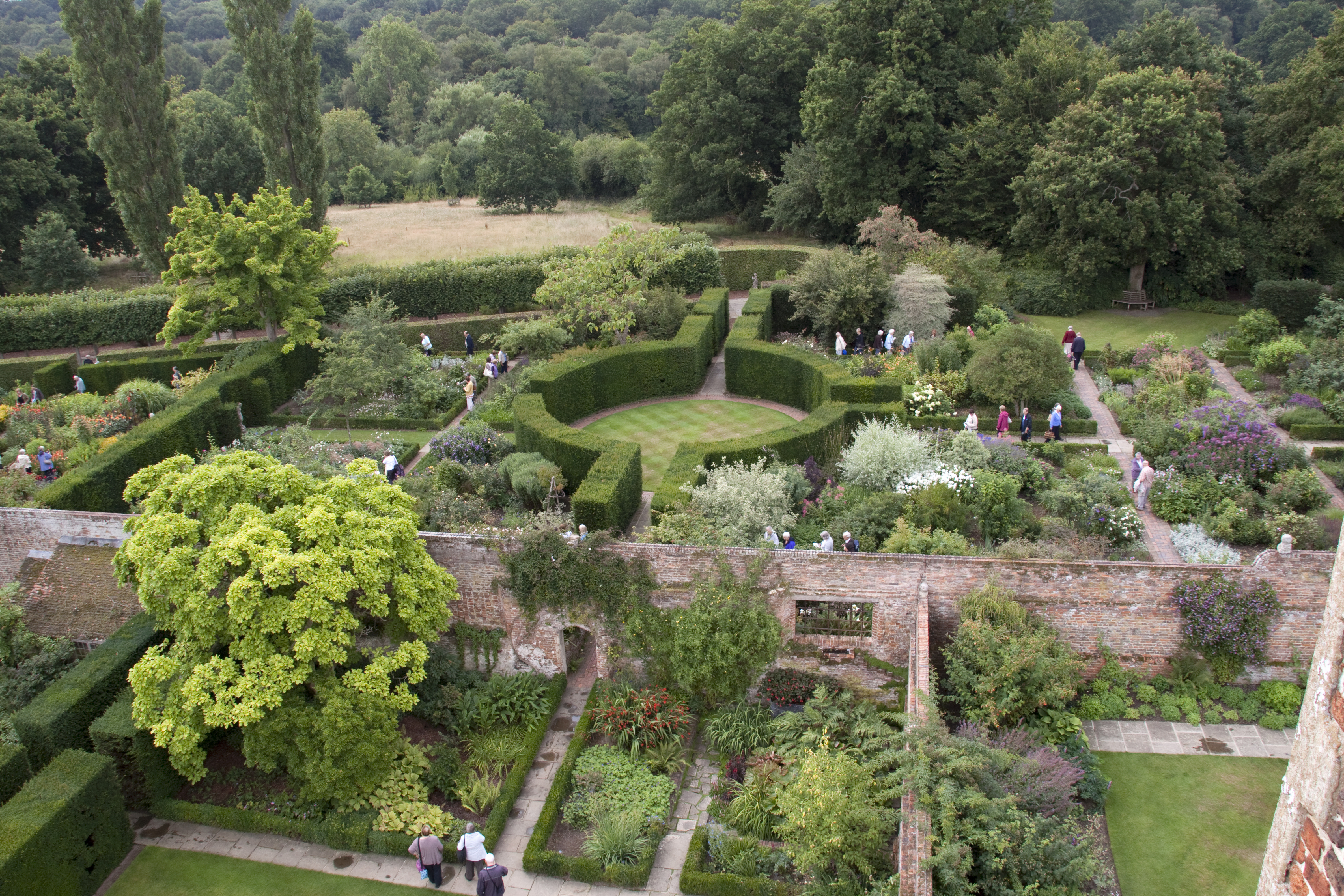
Sackville-West resumed writing in 1930 after a six-year break, primarily driven by the financial need to support Sissinghurst. Nicolson, having left the Foreign Office, no longer had a diplomat's salary, and she also needed to pay tuition for her two sons to attend Eton College. She felt her writing had improved thanks to Virginia Woolf's mentorship. In 1947, she began a weekly column in The Observer titled "In your Garden," despite not being a formally trained horticulturist or designer. This highly popular column continued until a year before her death, and her writing significantly contributed to Sissinghurst becoming one of England's most famous and visited gardens. In 1948, she became a founder member of the National Trust's garden committee. The grounds are now managed by the National Trust. She was awarded the Veitch Memorial Medal from the Royal Horticultural Society.
5. Social Impact and Evaluation
Vita Sackville-West's life and work had a notable social impact, particularly through her challenging of conventional norms regarding personal freedom and sexuality. Her writings, especially her autobiographical works like Portrait of a Marriage, openly discussed her bisexuality, contributing to early public discourse on diverse sexual identities. She advocated for a "spirit of candor" in society that would allow for greater tolerance of gay and bisexual individuals, believing that more people of her "type" existed than society commonly admitted under its "hypocrisy." While she sometimes expressed internal conflict and used terms like "deviant" or "perverted" to describe her sexuality, this was often within the context of seeking to explain it for "scientific purposes" or as a means to express herself in a less condemning way for publication. Her son, Nigel Nicolson, praised her for fighting for the right to love both men and women, rejecting conventional marital expectations and gender-specific love, believing that a new, more compassionate generation would appreciate her openness. Her life, particularly her relationship with Virginia Woolf, inspired Orlando, which became a significant work exploring gender fluidity and identity, further contributing to broader discussions on these themes. Her creation of Sissinghurst Garden, a pioneering and influential horticultural achievement, also left a lasting cultural heritage, demonstrating her artistic vision and dedication to the natural world.
6. Later Life and Death
Vita Sackville-West died at Sissinghurst in June 1962, at the age of 70, from abdominal cancer. She was cremated, and her ashes were interred in the family crypt within the church at Withyham, eastern Sussex.
7. Legacy and Commemoration
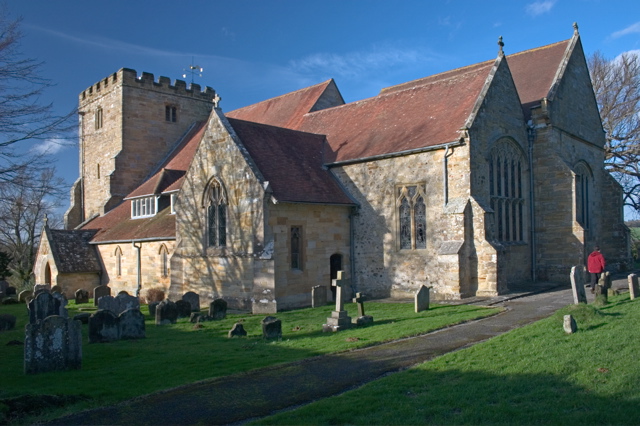
Sissinghurst Castle is owned by the National Trust. After Vita's death, her son Nigel Nicolson lived there. Following his death in 2004, his son Adam Nicolson, Baron Carnock, moved into the castle with his family. Adam Nicolson and his wife, horticulturalist Sarah Raven, have committed to restoring the mixed working farm and growing food on the property for residents and visitors, a function that had declined under the Trust's management. The London residence where Vita and Harold lived is commemorated with a blue plaque.
Her enduring influence on literature and garden design continues to be recognized. The film Vita and Virginia, starring Gemma Arterton as Vita and Elizabeth Debicki as Virginia, premiered at the 2018 Toronto International Film Festival. Directed by Chanya Button, the film is based on a play by Eileen Atkins, which was created from the love letters exchanged between Sackville-West and Woolf. The play was first performed in London in October 1993 and off-Broadway in November 1994.
8. Works
Vita Sackville-West's extensive body of work includes poetry, novels, children's books, short stories, plays, letters, biographies, guides, and translations.
8.1. Poetry
- Timgad: [a poem] (1900)
- Chatterton (1909)
- A Dancing Elf (1912)
- Constantinople: eight poems (1915)
- Poems of West & East (1917) (also credited as Mrs. Harold Nicolson)
- Orchard and Vineyard (1921)
- The Land (1926)
- King's daughter (1929)
- Sissinghurst (1931)
- Invitation to cast out care (1931)
- Collected poems (1933)
- Solitude: a poem (1938)
- The Garden (1946)
- Lost poem (or A Madder Caress) (2013)
8.2. Novels
- Heritage (1919)
- The dragon in shallow waters (1920)
- The Dragon in Shallow Waters (1921)
- Challenge (1920)
- Grey Wethers: a romantic novel (1923)
- Seducers in Ecuador (Hogarth Press, 1924)
- The Edwardians (1930)
- All Passion Spent (1931)
- Family History (1932)
- The Dark Island (1934)
- Grand Canyon: A Novel (1942)
- Devil at Westease: the story as related by Roger Liddiard (1947)
- The Easter party (1953)
- No Signposts in the Sea (1961)
8.3. Children's Books
- A Note of Explanation (written for Queen Mary's Dolls' House in 1924, published posthumously in 2017)
8.4. Short Stories and Novellas
- Orchard and vineyard (1892)
- The heir: a love story (1922)
- To be let or sold (1930)
- Thirty Clocks Strike the Hour, and other stories (1932)
- The death of Noble Godavary and Gottfried Künstler (1932)
- Another world than this ..: an anthology (1945)
- Nursery rhymes (1947)
8.5. Plays
- Chatterton: a drama in three acts (1909)
8.6. Letters
- Dearest Andrew: letters from V. Sackville-West to Andrew Reiber, 1951-1962 (1979)
- The Letters of Vita Sackville-West to Virginia Woolf (edited by Louise A. DeSalvo and Mitchell A. Leaska, Arrow, 1984)
- Vita and Harold: The Letters of Vita Sackville-West and Harold Nicolson (1992)
- Violet to Vita: The Letters of Violet Trefusis to Vita Sackville-West 1910-1921 (edited by Mitchell A. Leaska and John Phillips, 1991)
- Portrait of a Marriage: Vita Sackville-West and Harold Nicolson by Nigel Nicolson, Vita Sackville-West (compiled by her son Nigel Nicolson from her journals and letters, Weidenfeld & Nicolson, 1973)
- Love Letters: Vita and Virginia by Virginia Woolf and Vita Sackville-West (introduction by Alison Bechdel Vintage Classics, 2021)
8.7. Biographies
- Aphra Behn, the incomparable Astrea (Gerald Howe, 1927)
- Andrew Marvell (1929)
- Saint Joan of Arc (Doubleday 1936, reprinted M. Joseph 1969)
- Pepita (Doubleday, 1937, reprinted Hogarth Press 1970)
- The eagle and the dove, a Study in Contrasts: St. Teresa of Avila and St. Thérèse of Lisieux (M. Joseph, 1943)
- Daughter of France: the life of Anne Marie Louise d'Orléans, duchesse de Montpensier, 1627-1693, La Grande Mademoiselle (1959)
8.8. Guides
- Knole and the Sackvilles (1922) - a history of her ancestral home
- Passenger to Teheran (Hogarth Press 1926, reprinted Tauris Parke Paperbacks 2007)
- Twelve Days: an account of a journey across the Bakhtiari Mountains of South-western Persia (first published UK 1927; Doubleday Doran 1928; M. Haag 1987, reprinted Tauris Parke Paperbacks 2009 as Twelve Days in Persia)
- How does your garden grow? (1935) (Beverley Nichols, Compton Mackenzie, Marion Dudley Cran, Vita Sackville-West)
- Some flowers (1937)
- Country notes (1939)
- Country Notes in Wartime (Hogarth Press, 1940)
- English country houses (William Collins, 1941, illustrated)
- The Women's Land Army (M. Joseph / Ministry of Agriculture and Fisheries, 1944)
- Exhibition Catalogue: Elizabethan portraits (1947)
- Knole, Kent (1948)
- In Your Garden (1951)
- In your garden again (1953)
- Walter de la Mare and The traveller (1953)
- More for your garden (1955)
- Even more for your garden (1958)
- Joy of Gardening: a selection for Americans (1958)
- Berkeley Castle (1960)
- Faces: profiles of dogs (Harvill Press, 1961, photographs by Laelia Goehr)
- Garden Book (1975)
- Hidcote Manor Garden, Gloucestershire (1976)
- Une Anglaise en Orient (1993)
8.9. Translations
- Duineser Elegien: Elegies from the Castle of Duino, translated from the German of Rainer Maria Rilke by V. and Edward Sackville-West (1931)